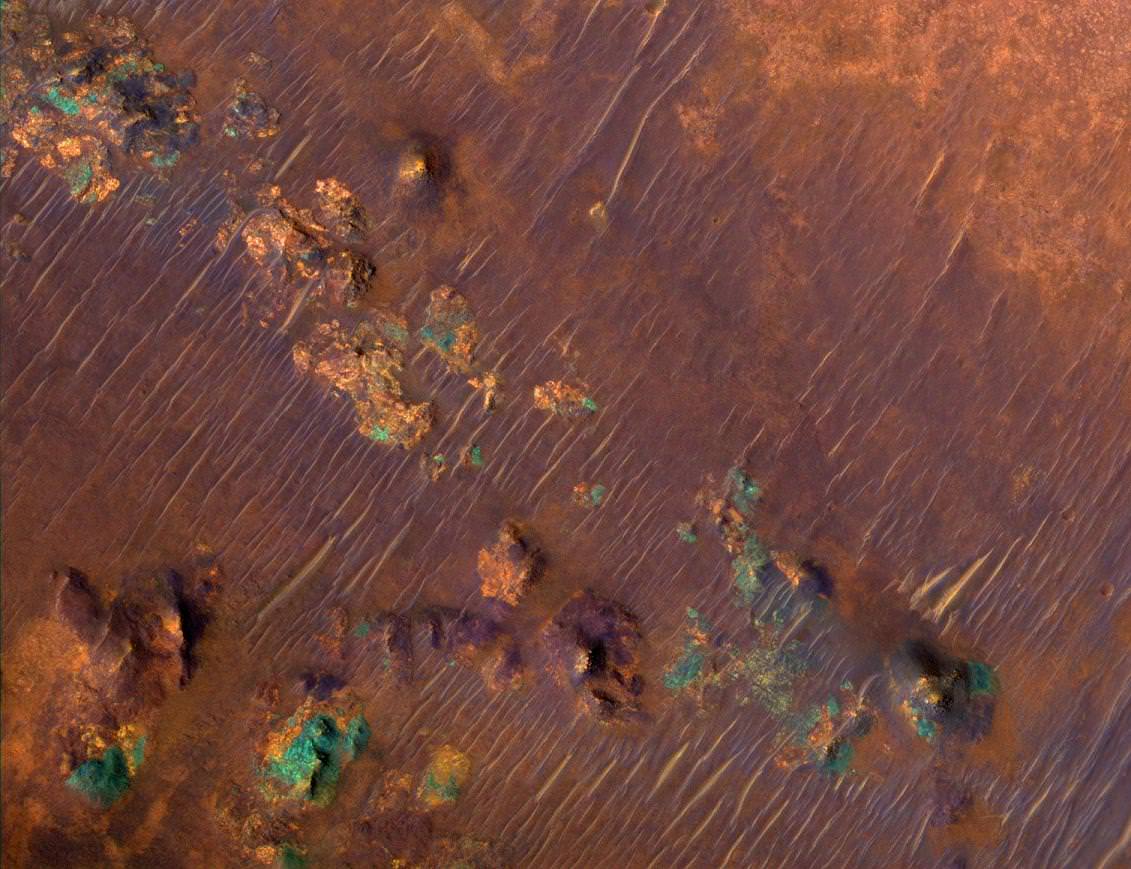[/caption]
What does a more than three billion year old sandstone formation in Western Australia have in common with Mars? The Aussie stones contain the oldest living microbial record of life on Earth – and it might be the basis of fossil discovery on Mars. The early Archaean rocks are providing geologists with microfossil evidence that early life might have been utilizing sulpher – instead of oxygen – for their ecosystems.
“At last we have good solid evidence for life over 3.4 billion years ago. It confirms there were bacteria at this time, living without oxygen,” said co-researcher Professor Martin Brasier at Oxford University, UK. “Such bacteria are still common today. Sulphur bacteria are found in smelly ditches, soil, hot springs, hydrothermal vents – anywhere where there’s little free oxygen and they can live off organic matter,” he explained.
But providing morphological evidence for these sulphur-metabolizing bacteria hasn’t been as easy as just digging up some stones. The first detection came in 2007 at Strelley Pool, a now arid area which may have once been an estuary or shallow water region. Associated with micrometre-sized pyrite crystals, these microstructures show all the right ingredients for early life properties, such as hollow cell lumens and carbonaceous cell walls enriched in nitrogen. Spheroidal and ellipsoidal forms are good indicators of bacterial formations and tubular sheaths point to multiple cell growth. They also display pyrite content, but there’s no “fool’s gold” here in these light isotopes… it’s a metabolic by-products of the cells.
“Life likes lighter isotopes, so if you have a light signature in these minerals then it looks biological,” said lead author Dr David Wacey from the University of Western Australia. “There are ways to get the same signature without biology, but that generally requires very high temperatures. So when you put together the light isotope signature with the fact the pyrite is right next to the microfossils – just a couple of microns away – then it really does look like there was a whole sulphur ecosystem there,” he reported to BBC News.
So what does this discovery have to do with Mars? In its northern hemisphere is a region called Nili Fossae which photographically bears a strong resemblance to Australia’s Pilbara region – home to Strelley Pool. With a huge amount of clay minerals documented, Nili Fossae just might be the ideal place for US space agency’s Curiosity-Mars Science Laboratory rover mission to begin a search for early Martian life forms. But don’t get too excited just yet… The study on a remote planet is going to prove even more difficult than here on Earth.
“Some of the instruments we used can fill a whole room, but some of them can be miniaturised,” said Dr Wacey. “A rover could narrow down the targets but then you’d really have to bring samples back to Earth to study them in detail.”
Original Story Source: BBC News – Science and Environment and Nature Geoscience.


Mars was a colorful planet. Maybe something wrong cause a weakness of its magnetic to turn into a planet lifeless. Water on earth was likely from Mars.
Yo Tammy, you’ve misspelled sulphur in the fourth line>.
Wow, Fungus
I am glad Brasier et al found methods and results that are so much more testable than Schopf et al pattern search.
This is interesting from two other aspects.
– Strelley Pool formation, the find site, has earlier yielded stromatolites with micro-structures much as testable for bacterial origination. I don’t think they were effectively touched by Brasier’s criticism.
– And the old, not very constrained (putatively ~ 4.28 – 3.85 Ga bp), Nuvvuagittuq greenstone belt may have signs of precisely sulfur metabolism as well. At least you can find, unfortunately unpublished, texts to that effect on the web.
It would be nice if the Strelley Pool and the Nuvvuagittuq results coalesce on the same ancestral metabolism and push it further back in time, it would be a reasonable hope at this stage.